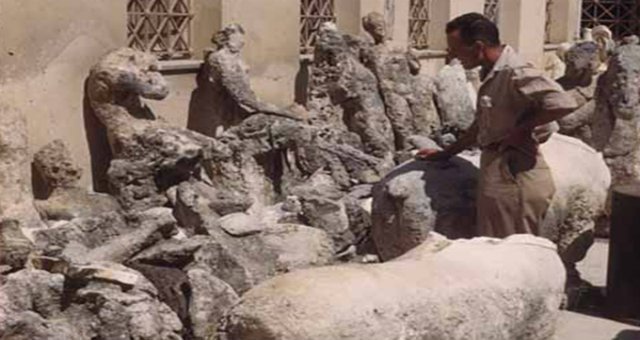-
Tips for becoming a good boxer - November 6, 2020
-
7 expert tips for making your hens night a memorable one - November 6, 2020
-
5 reasons to host your Christmas party on a cruise boat - November 6, 2020
-
What to do when you’re charged with a crime - November 6, 2020
-
Should you get one or multiple dogs? Here’s all you need to know - November 3, 2020
-
A Guide: How to Build Your Very Own Magic Mirror - February 14, 2019
-
Our Top Inspirational Baseball Stars - November 24, 2018
-
Five Tech Tools That Will Help You Turn Your Blog into a Business - November 24, 2018
-
How to Indulge on Vacation without Expanding Your Waist - November 9, 2018
-
5 Strategies for Businesses to Appeal to Today’s Increasingly Mobile-Crazed Customers - November 9, 2018
Researchers discover New Treasures from Famous shipwreck
Recently salvaged objects include remains of a bone flute, glassware, chess-like piece from a game played in ancient times, more likely before 65 B.C. when the ship could have sunk, reports Christian Science Monitor.
Advertisement
A shipwreck, which gave the world the mysterious Antikythera mechanism, continues to yield more treasures and teaching scientists about the lifestyles of the ancient and Greeks. It was discovered by sponge divers off Point Glyphadia on the Greek island of Antikythera in 1900.
The ancient Greek shipwreck that produced the awesome Antikythera mechanism, hailed as the world’s first analog computer (being nearly two millenia old), had archaeologists’ collective trousers full of ants and it seems that their enthusiasm was well placed.
Fast forward well over a century and, last year, the Woods Hole Oceanographic Institution, together with researchers at Greece’s Ephorate of Underwater Antiquities, set out to have a closer look at the shipwreck. Scientists believe it was used to accurately predict solar and lunar eclipses and to calculate the movements of the planets in the solar system. During that time, the fishermen were able to retrieve dozens of luxury items, fragments of sculptures and statues, as well as the remains of the ship’s passengers and crew members.
Foley and his team are part of a long-term research program and on-going scientific excavation of the wreck, first launched in 2014.
One of the archaeologists on the project said the group has been lucky in 2015, as they have excavated a number of finds, which has given them the opportunity to take complete advantage of the information the finds’ provided.
The divers have found that they need to dive much deeper into the ocean floor than earlier, to get their hands on the more “lucrative treasures” out there.
Further, this is the first time that a systematic excavation is carried out at the site.
The recent three-week expedition has left the team with the best understanding yet of the shipwreck and its cargo. A metal detection survey of the site revealed that metallic targets are dispersed over an area of about 40×50 meters.
Numerous artifacts were found buried beneath a thick layer of coarse sand and massive deposits of broken ceramics.
The team created 3D virtual reconstructions of many artifacts on the seafloor, and 3D-modeled all of the major recovered artifacts once on shore. The more you dive in the wreck, the more you will get to know about it. Analysis of the lead recovered from the site may determine where it was mined, and therefore reveal the home port of the ship.
Advertisement
The previously discovered artifacts will displayed in a special exhibition in Switzerland from September 27 to March next year. Often called “a device out of time” is now on display in the National Archaeological Museum of Athens.




























